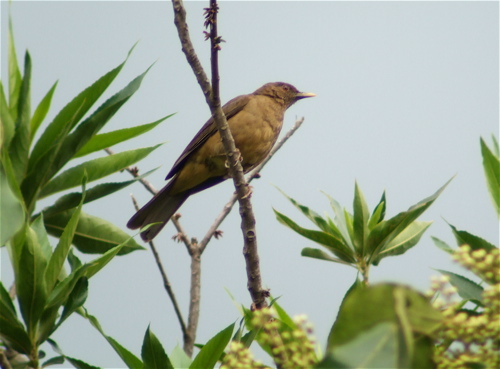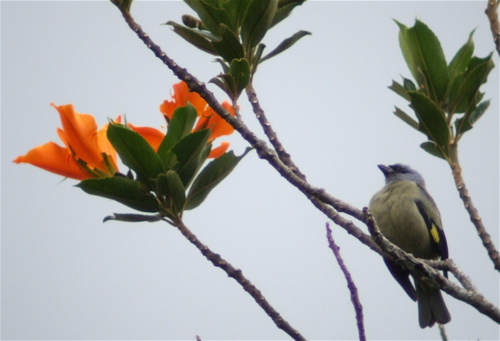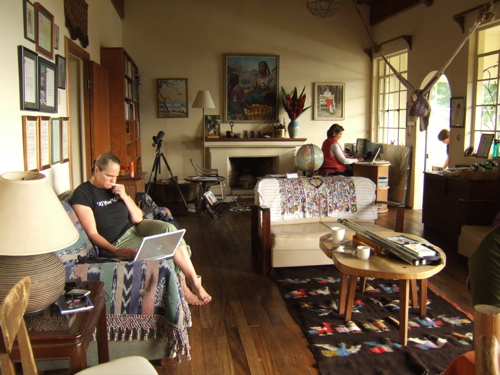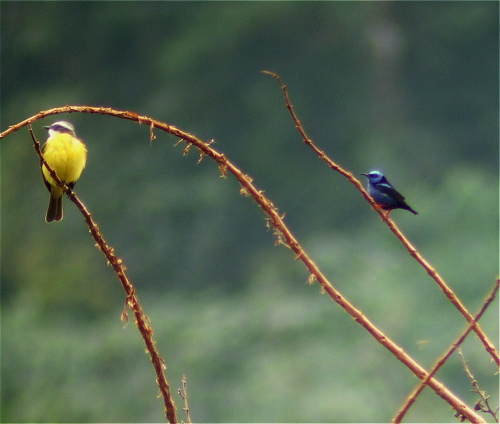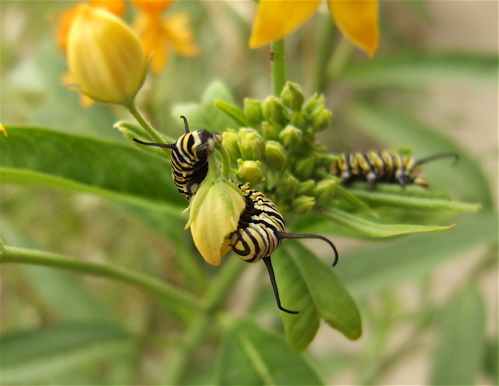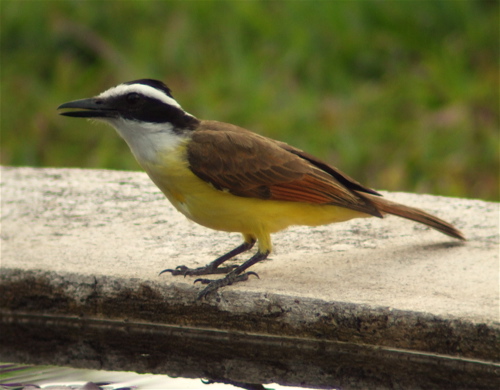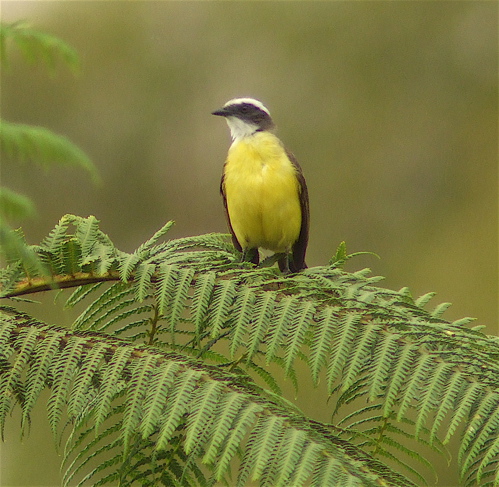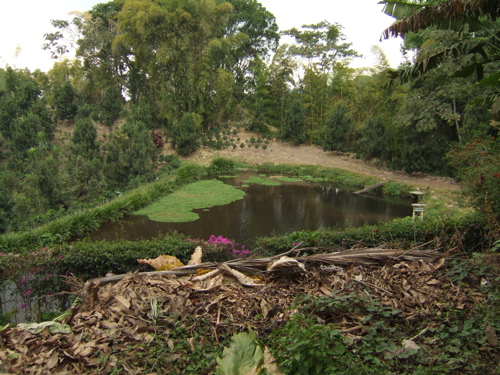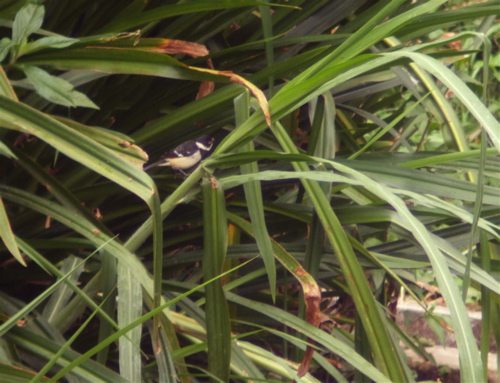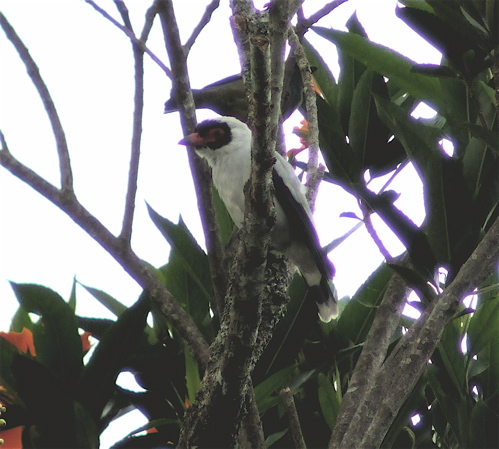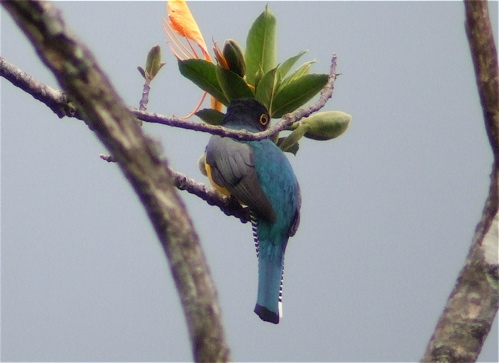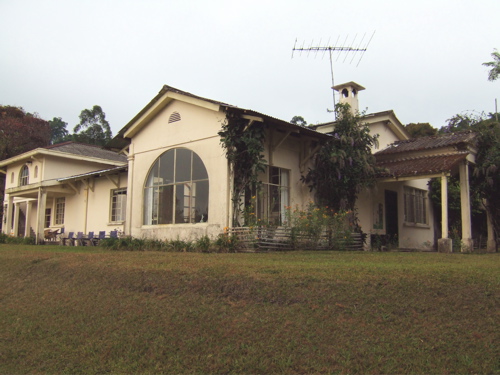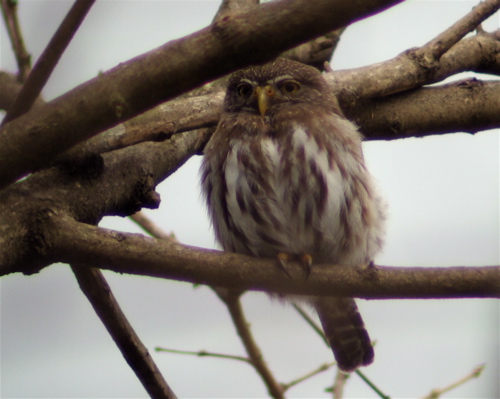 Look at this pygmy-owl outside of Los Andes lodge! This one perched right out the front door. There was some debate as to whether this was a ferruginous pygmy-owl or mountain pygmy-owl. The debate seemed to center around the spots on his head. Ferruginous pygmy-owls should have streaks, mountain pygmy-owls should have more spots. To me, it looks streaky. Bottom line, it was a tiny owl.
Look at this pygmy-owl outside of Los Andes lodge! This one perched right out the front door. There was some debate as to whether this was a ferruginous pygmy-owl or mountain pygmy-owl. The debate seemed to center around the spots on his head. Ferruginous pygmy-owls should have streaks, mountain pygmy-owls should have more spots. To me, it looks streaky. Bottom line, it was a tiny owl.
Pygmy-owls were all over the place in Guatemala, this was a pygmy-owl that was spotted as our bus was passing through a small town. You know how in the US, some people will try to whistle like an eastern screech-owl, in Guatemala, birders whistle like pygmy-owls to get smaller birds to come in closer. One day our group saw a yellow-wing cacique fly over. In trying to get it to come back, someone in our group started the pygmy-owl call and I noticed something small and brown fly up to a telephone pole with a hole. At first I thought it was a wren, but it was a ferruginous pygmy-owl--we actaully called one in.
How's this for a Guatemala sunrise? This was just off of the organic tea farm at Los Andes Private Nature Reserve. The tea is bordered by cloud forest where resplendent quetzals can be found. I'm generally not a fan of early rising (I know, I know, I'm a birder, I'm supposed to enjoy getting up in the dark, but I don't). However, when I'm forced to get up, what a treat to get a fabulous sunrise.
Here's a zoom in, you can see the puffs of smoke coming off the volcano--beautiful. We took our time walking in to the forest, many birds were already singing. I mentioned early on that digiscoping was a challenge in Guatemala--digiscoping in the tropics is hard work and this was a trail where I had to make a decision: spend a few wasted seconds trying to get the camera an scope lined up, or use those precious seconds to enjoy the bird. One was an antpitta, I can't think of any way to describe it but maybe, combine an American robin and a nerf football with long legs. It was a bird I expected to only hear and not see, but as our group made it through the forest, one was walking along the path searching for food. What a treat to see this secretive brown bird.
Here's the view of the tea farm outside of the forest with the quetzal. This was a cool spot to stand in and just watch birds go by.
We searched this forest more than once for the quetzal but I only heard it, I did not see it. I heard two different versions of quetzal sounds. One was a rather pleasant, almost ticking call. The other scared the crap out of me. I found a very distant version of it on Xeno Canto, you'll hear this kindy of shrieky gobble, that's what I heard, only it was right behind me and ten time louder. I literally ducked when I heard it. Alas, did not see the quetzal, but we saw their nest boxes scattered about. We saw so many other birds including azure-rumped tanager, emerald touchanette, blue-crowned chlorophonia, and collared trogon that I could live with living to see a quetzal another day.
They did have resplendant quetzal tail feathers on display at the lodge. I stood next to one to give some perspective as to how long their tails can get. I'm five foot and that tail is over half as long as I am.
I should mention that the road to the quetzal area is quite adventurous. Our group was packed into the pack of this truck and we had to stand...I had to be careful where I stood. My head was at the top bar level and if I stood in one of the corners, I would end up hitting my head.
The ride is about about twenty minutes long on what I would call minimum maintenance roads...and the above was about as flat as they got. There were curves and hills and large rocks and we were bounced all over in the back. It was nerve racking enough to watch when it was daylight and even more so when it was dark--our drivers were great, they knew how to drive on those roads, but to me who is not used to those types of mountain road--it was exciting. But the upside of when it was dark was that we'd periodically stop for pauraques sitting in the road, I'm sure they followed our vehicle a bit as toddled down the road, going after insects kicked up.
I have to get back to Los Andes. At least to see the quetzal, but also because it's a cool place.









